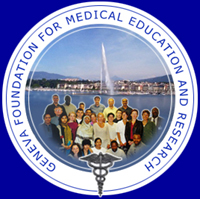Active student screening: right or wrong?
Pesquisa activa estudiantil: ¿acierto o desacierto?
Omar Milián Ramírez1* https://orcid.org/0000-0001-6600-6729
Ivette Irene Molina Linares1 https://orcid.org/0000-0002-7839-8405
Daylin Consuegra Moya1 https://orcid.org/0000-0002-9157-299X
1 Villa Clara University of Medical Sciences. Villa Clara. Cuba.
* Author for correspondence. Email: omarmr@infomed.sld.cu
Submitted: 23/12/2020
Accepted: 25/03/2021
Dear editor:
The rapid spread to other countries of the COVID-19 disease that appeared in China in December 2019, prompted the World Health Organization (WHO) to declare the outbreak as a Public Health Emergency of International Importance (ESPII) on January 30 2020, and as a pandemic on March 11 in the same year, when confirmed cases exceeded 118 thousand in 114 countries, and the number of deaths raised to 4,291.(1,2,3)
The government of Cuba was preparing the stage to confront the disease and the Council of Ministers approved the Plan for the Prevention and Control of the new corona virus in an extraordinary session, which is permanently updated, based on the behavior of the pandemic in the country and the result of research and established work strategies. On March 11, 2020, the first cases were reported in Cuba and from that moment on, daily positives increased, so accelerated growth was feared as it had occurred in the world.(4)
On March 18, 2020, an active screening of patients with respiratory symptoms began by students of medical universities throughout the country as part of the actions of the aforementioned plan, based on the experiences of previous campaigns against transmissible diseases, but adopting strategies adjusted to the new circumstances.
At the beginning, there was an avalanche of criticism on social networks and there was disagreement on the part of parents and relatives of the students who were concerned about the news that was received about the incidence of the disease among health professionals in the world ; However, it was started and the Villa Clara University of Medical Sciences incorporated 2,132 students and 148 professors; For the most critical moment of the epidemic, 3,792 students from different degrees and formations and 425 teachers participated in the active investigation, who managed to visit an average of 100,000 homes in the province daily.
The screening was organized from the university itself and in each health area of the territory a teaching staff leader was appointed to direct and organize the task; A managerial position created in the teaching departments of each polyclinic was in charge and which was integrated by representatives of the Federation of University Students Sp.(FEU) and the Young Communist League Sp. (UJC) Working groups made up of 20 students organized by duos accompanied by a teacher were organized.
This managerial position controlled the development of the activity and consolidated the results of the screening carried out at the community level with the participation of the basic health teams and the mass and political organizations of these communities. The teacher responsible for each team also controlled the results of the daily research carried out on the students participating in the activity. This favored the adoption of new decisions and allowed the feedback of the academic orientations emanating from the university and the Ministry of Public Health Sp. (Minsap).
During the period in which the activity was carried out, a total of 194 students were under follow-up at different times because they were classified as suspects or contacts, which represented 5.11% of the total in the active screening. Only 19 of them were direct contacts of positive cases during the active screening for 0.50%. At the end of the period, no COVID-19 patient was reported who had a direct source of infection during this activity.
Prior training for students on biosafety and epidemiological measures to avoid and reduce the risks of acquiring the disease, the seriousness and responsibility of the participants and the years of accumulated experience in dealing with transmissible diseases, allowed compliance with the task in a satisfactory way, which showed the correctness of this decision making.(5)
Today the work of the students of medical sciences and their important contribution to the confrontation of the pandemic is recognized. Dressed in gallantry in the face of the unknown, and with the courage that characterizes Cuban health professionals, they demonstrated once again that they are the true followers of that centennial generation, currently belonging to another historical moment, but undoubtedly continuity of the Cuban revolutionary process.
BIBLIOGRAPHIC REFERENCES
1. Organización Panamericana de la Salud/Organización Mundial de la Salud. Actualización epidemiológica: Enfermedad del coronavirus (COVID-19). 26 de agosto de 2020. Washington, D.C.: OPS/OMS; 2020. [citado 20/11/2020]. Disponible en: https://www.paho.org/es/documentos/actualizacion-epidemiologica-enfermedad-por-coronavirus-covid-19-26-agosto-2020
2. Organización Panamericana de la Salud/Organización Mundial de la Salud. Actualización epidemiológica: Enfermedad del Coronavirus (COVID-19). 18 de septiembre de 2020, Washington, D.C.: OPS/OMS; 2020. [citado 20/11/2020]. Disponible en: https://www.paho.org/es/documentos/actualizacion-epidemiologica-enfermedad-por-coronavirus-covid-19-18-septiembre-2020
3. López-Ponce de León JD, Cárdenas-Marín PA, Giraldo-González GC, Herrera-Escandón A. CORONAVIRUS COVID 19: Más allá de la enfermedad pulmonar, qué es y qué sabemos del vínculo con el sistema cardiovascular. Rev Colomb Cardiol. [Internet]. 2020 [citado 20/11/2020]. Disponible en: https://www.sciencedirect.com/science/article/pii/S0120563320300784
4. González Capdevila O, Botello Ramírez E. Protagonismo de los estudiantes de las ciencias médicas en el enfrentamiento a la COVID-19. Medicentro Electrónica [Internet]. 2020 [citado 16/12/2020];24(3):[aprox. 4 p.]. Disponible en: http://medicentro.sld.cu/index.php/medicentro/article/view/3226/2611
5. Montano Luna JA, Tamarit Díaz T, Rodríguez Hernández O, Zelada Pérez MM, Rodríguez Zelada DC. La pesquisa activa. Primer eslabón del enfrentamiento a la COVID-19 en el Policlínico Docente "Antonio Maceo". Rev Haban Cienc Med [Internet]. 2020 [citado 20/11/2020];19(supl.1):[aprox. 20 p.]. Disponible en: http://scielo.sld.cu/scielo.php?script=sci_arttext&pid=S1729-519X2020000400010
Declaration of interests
The authors declare no interest conflicts
Authors' contribution
Omar Milián Ramírez and Dailyn Consuegra Moya: analyzed the bibliography and wrote
the article.
Ivette Irene Molina Linares: performed a critical review and agreed to the final manuscript.
This article has been published under the Creative Commons license.
Copyright (c) 2021 EDUMECENTRO

Esta obra está bajo una licencia de Creative Commons Reconocimiento-NoComercial-CompartirIgual 4.0 Internacional.










